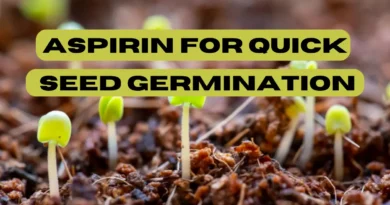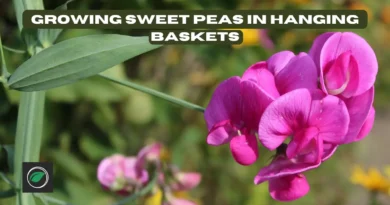Why are Leaves edges turning brown Of Elephant Ear Plants?
Dealing with the Issue: Leaves Edges Turning Brown of Elephant Ear Plants-2024
Elephant ear plants (Colocasia) are captivating additions to gardens and indoor spaces, with their distinctive heart-shaped leaves resembling the ears of an elephant. However, witnessing the browning of their lush leaves’ edges can be concerning for any plant enthusiast.
In this article, we will discuss the causes behind why leaves edges turning brown of elephant ear plants and we will provide practical care tips to ensure the continued health and vibrancy of your beloved elephant ear plants.
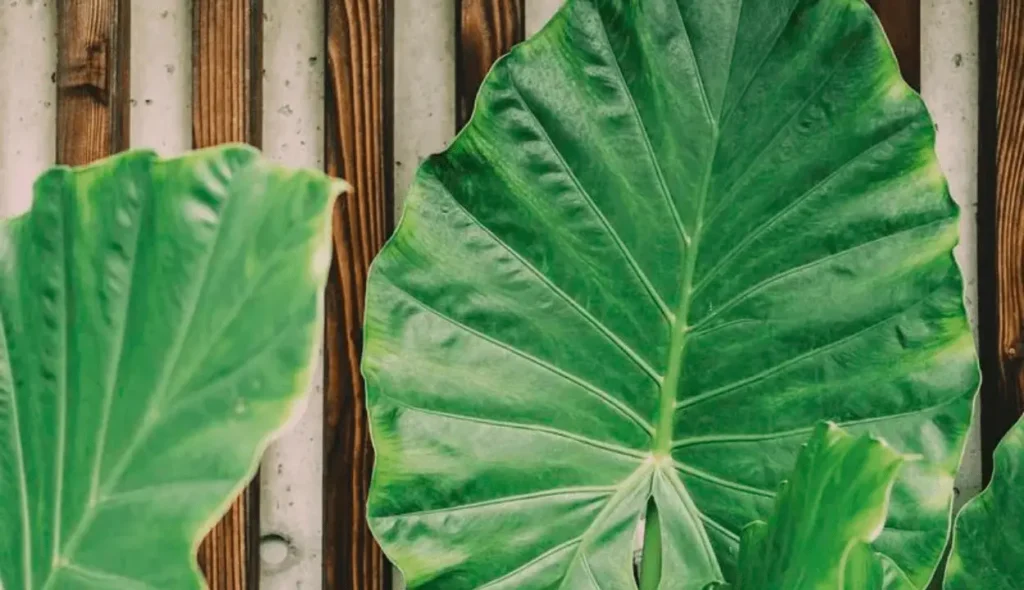
Table of Contents
Understanding Elephant Ear Plants:
Elephant ear plants belong to the Araceae family and they belong to tropical and subtropical regions. The elephant ear plants have beautiful foliage and the ability to grow both indoors and outdoors which make them favorites for many people. The elephant ear plants need some care for the healthy growth and lush green leaves and if the proper care is not done this can cause leaves edges turning brown of elephant ear plants.
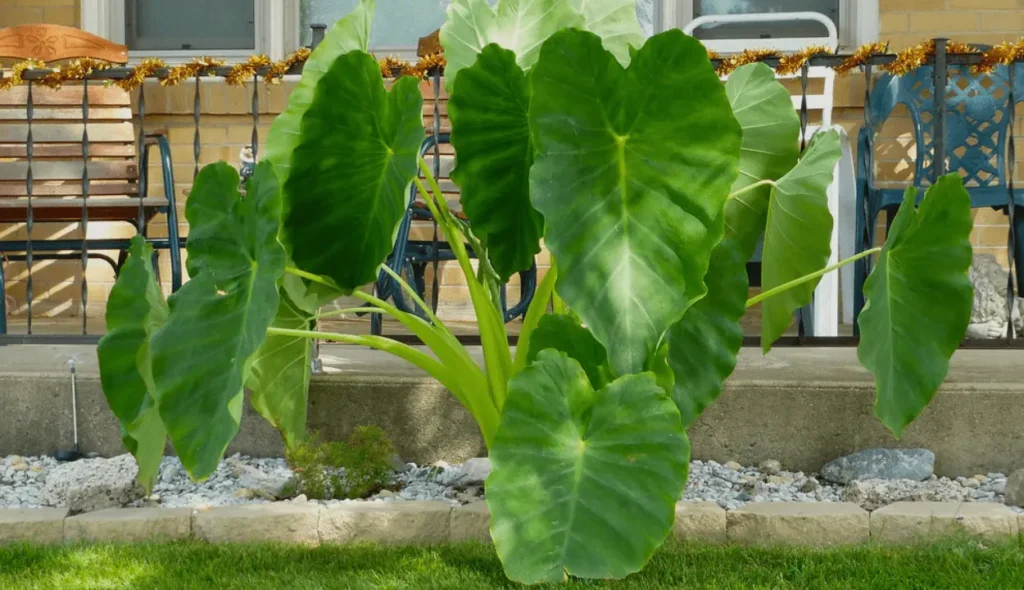
Causes of Leaves Edges Turning Brown of Elephant Ear Plants:
- Inadequate Humidity:
Elephant ear plants hail from humid climates, so insufficient moisture in the air can accelerate the loss of water from their leaves. This leads to crispy, brown edges. To rectify this, consider misting the plant regularly or using a humidity tray.
- Watering Effect on Plants:
Overwatering or underwatering can both contribute to brown edges. Overwatering leads to root rot, hampering nutrient absorption, while underwatering causes stress and dehydration. Maintain a watering schedule that lets the top inch of soil dry out between watering.
- Direct Sunlight Impact:
Although they thrive in bright light, direct sunlight can scorch elephant ear leaves, causing leaves edges turning brown of elephant ear plants. Opt for filtered or indirect light to prevent sunburn.
- Nutrient Imbalance:
A shortage of essential nutrients, especially potassium, and magnesium, can manifest as leaves edges turn brown. Regularly fertilize the plant with a balanced formulation to prevent deficiencies.
- Pests and Diseases:
Insects such as aphids and mealybugs can damage leaves, leading to browning. Regular inspections and timely treatment are crucial to preventing infestations.
- Drainage Issues:
Elephant ear plants require well-draining soil to prevent root suffocation and subsequent leaf browning. Ensure proper drainage in the container.
- Temperature Fluctuations:
Rapid temperature changes, including cold drafts, can shock the plant and cause leaf browning. Maintain consistent temperatures to avoid stress.
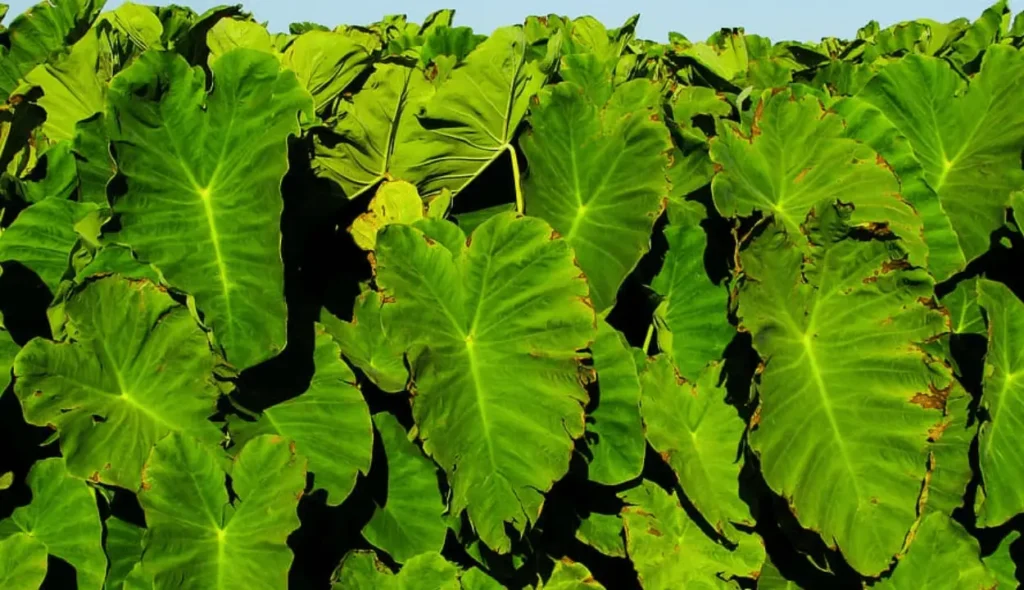
Essential Tips for Prevention and Care:
- Humidity:
Elephant ear plants belong to tropical regions so they grow well in humidity. To provide this environment, raise the humidity level surrounding your plant. Water misting, having a tray of water and pebbles nearby, and do not place your plants in direct sunlight especially in summer to keep the moisture in the leaves.
This will help to avoid a rapid loss of moisture from the leaves, which is a common cause of leaves edges turning brown of elephant ear plants.
- Watering:
Watering is an important aspect of the lush growth of the elephant ear plant. Only water your plant when the soil becomes dry. It is necessary to allow the top inch of the soil to dry out before the next watering session to avoid elephant ear plant edges turning brown.
Insert your finger into the soil to check the moisture if it feels dry, then you can water your plants. It is also important to keep in mind that the pot has adequate drainage to prevent water from gathering and causing root rot.
- Sunlight:
Elephant ear plants grow successfully in bright, filtered light. Direct sunlight can be harsh for elephant ear plants causing the leaves to scorch and leaves to start turning brown. Place your plant in a spot where it receives indirect sunlight. If grown outdoors, ensure that the plant is shielded from intense midday sun. This adjustment will prevent sunburn and help maintain the lush green appearance of the leaves.
- Nutritional Support:
Just like any living organism, elephant ear plants require a balanced diet. During the growing season, fertilize your plant with a water-soluble fertilizer. Always use fertilizers that have more nitrogen than other nutrients because to grow lush green leaves nitrogen plays an important role.
The fertilizer should also contain necessary micronutrients like magnesium and iron. These major micronutrients are crucial for vibrant leaf growth and color. Regular fertilization will contribute to healthier foliage and minimize the occurrence of brown edges.
- Pests Control:
Pests like aphids, mealybugs, and spider mites can cause damage to elephant ear plant leaves. These small pests can cause damage to your plant which can be a reason for leaves edges turning brown of elephant ear plants. Inspect the undersides of the plant’s leaves regularly for signs of pests. If you see any pest on the underside of plant leaves, take immediate action. To kill pests and protect the plant from additional damage, use insecticidal soap or neem oil.
- Well-Drained Soil:
Elephant ear plants thrive better in well-drained soil than in conventional soil. To avoid leaves edges turning brown of elephant ear plants and root rot it is recommended that always use a well-draining potting mix that allows excess water to drain away from the roots.
Always remember that the container must have proper drainage holes to allow excess water to escape. A well-balanced soil-drainage system promotes good root function, which in return supports healthy leaf growth.
- Temperature:
These tropical plants are sensitive to extreme temperature fluctuations. Sudden changes, especially exposure to cold can stress the plant and cause the edges of the leaves to brown. Maintain a consistent temperature around the plant, avoiding placing it near vents, doors, or windows prone to drafts.
If your plants are placed outdoors you can bring them in a shed or indoors where light reaches to plant. In summer don’t place your plants in direct sunlight. These tips ensure that your plant remains stress-free and exhibits its stunning foliage without the browning effect.
- Pruning and Upkeep:
Regular maintenance is crucial to ensuring the overall health and appearance of your elephant ear plant. As you notice browning edges or damaged leaves, trim them away using clean, sharp scissors or pruning shears. This not only enhances the plant’s aesthetic but also stimulates new growth. Proper pruning redirects the plant’s energy towards healthier leaves, preventing the spread of browning.
- Repotting:
As your elephant ear plant grows, it might outgrow its current container. To provide ample space for root expansion and refresh the soil nutrients, consider repotting every couple of years. Choose a larger pot than before when repotting with drainage holes and fill it with a well-draining potting mix. Repotting is an opportunity to give your plant a fresh start and encourage vigorous leaf growth.
- Cleaning leaves:
Keeping your plant’s leaves clean is more important than you would think. Dust can collect on the leaves which hinders the process of photosynthesis and the plant cannot breathe adequately. Regularly washing the leaves with a damp cloth or sponge allows your plant to breathe easier and improves its general health.
- Seasonal Awareness:
It’s important to remember that sometimes the edges of leaves turn brown of elephant ear plant naturally as the plant adapts to seasonal changes. During certain periods, the plant might shift its energy focus, leading to minor leaf browning. However, healthy new growth typically follows this cycle, so there’s no need for immediate concern.
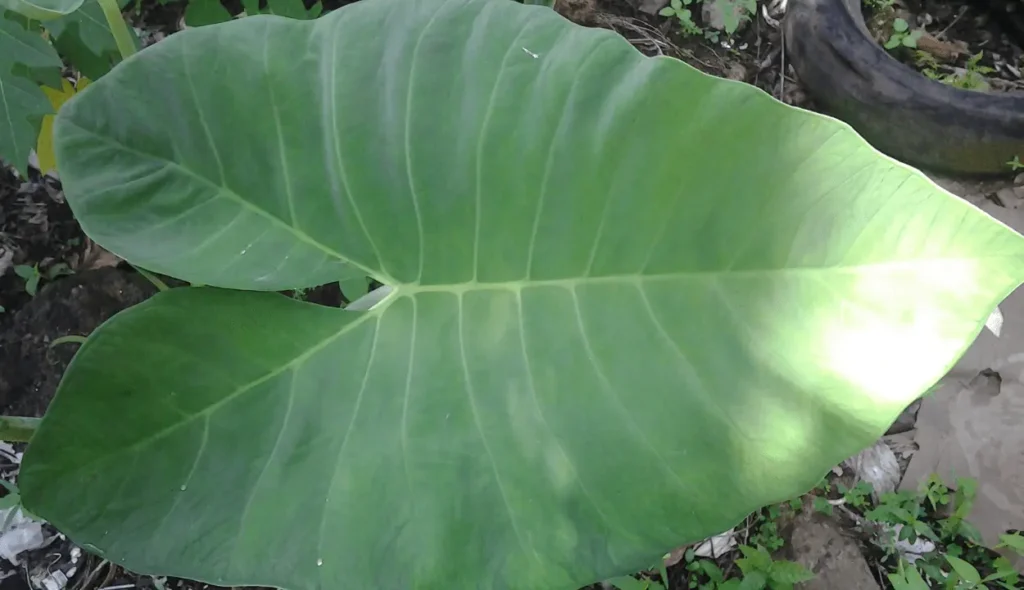
Conclusion
In conclusion, the leaves edges turning brown of elephant ear plants is a multifaceted issue with numerous potential causes. By understanding the factors contributing to this phenomenon and implementing proper care measures, you can maintain your plant’s vitality and visual appeal. The key lies in maintaining appropriate humidity, watering routines, lighting conditions, and protecting against pests and temperature extremes.
FAQs
Why are the edges of my elephant ear plant’s leaves turning brown?
The edges of elephant ear plant leaves may turn brown due to inadequate humidity, improper watering, excessive direct sunlight, nutrient imbalances, pest infestations, drainage issues, temperature fluctuations, or natural seasonal changes.
How can I increase humidity for my elephant ear plant?
You can raise the humidity around your elephant ear plant by misting it regularly, placing a tray of water and pebbles nearby, and avoiding direct sunlight, especially in summer. These steps help retain moisture in the leaves and prevent them from turning brown.
What is the best watering schedule for elephant ear plants?
Water your elephant ear plant when the top inch of soil becomes dry. Ensure the pot has proper drainage to prevent water from accumulating and causing root rot. Insert your finger into the soil; if it feels dry, it’s time to water.
How can I protect my elephant ear plant from pests?
Check the undersides of the plant’s leaves frequently for pests including aphids, mealybugs, and spider mites. If you see any, get rid of them and stop leaf damage by using insecticidal soap or neem oil.
When should I consider repotting my elephant ear plant?
Consider repotting your elephant ear plant every couple of years to provide room for root expansion and refresh the soil nutrients. Choose a larger pot with proper drainage holes and a well-draining potting mix for a successful repotting process.


